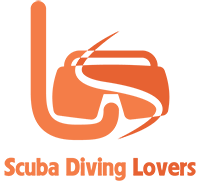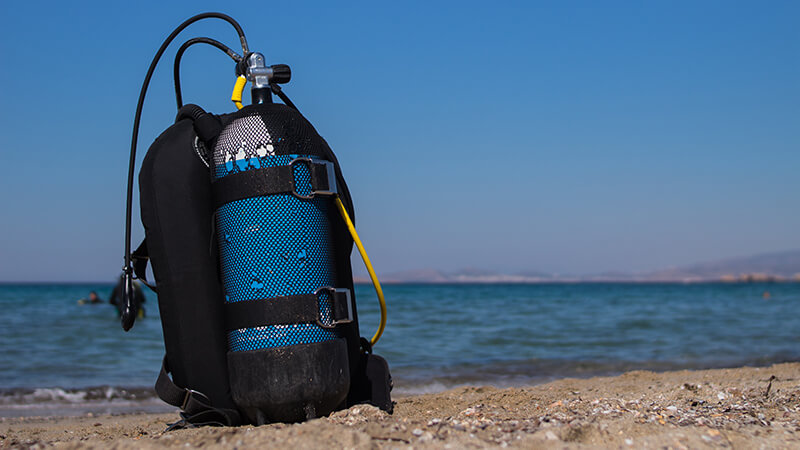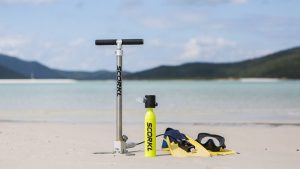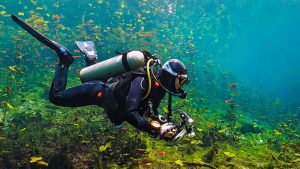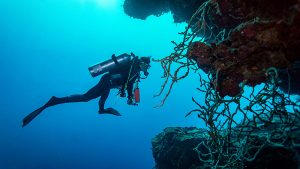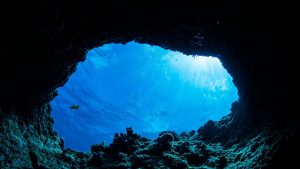If you are a scuba diver, you know what is a BCD for scuba diving. This is the Buoyancy Control Device. A BCD scuba is something that helps you get neutral buoyancy at a certain depth in the water to help you not sink any further.
A BCD for scuba diving is equipped with “bladders” into which you pump air or deflate, making it easier to descend or ascend inside the water.
By inflating or deflating your BCD, you can make yourself neutrally-buoyant or positively-buoyant. Is this an important piece of diving gear, you know, such as the mask for scuba diving, or can you do without it?
Well, when diving, you know that it is about your gear, as much as it is about your skill. Thankfully, there is no shortage of diving gear in the online marketplaces. For example, you can order some fairly priced diving BCD on Amazon.com.
Next to your scuba diving tank, the BCD is the next important, and costly thing too. You can read about the cost of scuba diving gear before you buy.
The good thing though is that most of the scuba diving gear is a one-off buy. For example, with good care, your scuba tank can serve you for many years.
Most important thing about what is a BCD scuba diving
Emergencies under the water can easily turn from small to a matter of life and death! To avert such escalation, understand how you diving scuba gear works. All of it.
Understand how the diving computer works, how the tank, the scuba BCD and other things work. If you do not understand how your gear works, then you are not any better than a person who has no gear. In fact, a skilled free diving enthusiast is better than you.
Before you know how to use a BCD for scuba diving, you need to know about three things. These are neutral buoyancy, positive buoyancy and negative buoyancy.
The importance of this is that your BCD for scuba diving operates around the three.
Here they are:
Negative buoyancy
Firstly, buoyancy is the ability of a person or an object to stay afloat in water. This means that its density must be less than that of water.
Therefore, when you are floating on the surface of water, perhaps when you are wearing a life jacket for snorkeling, you are positively buoyant.
Thus, negative buoyancy is when you are in the water, deep down and you want to descend deeper. Thus, when descending, you are neutrally buoyant.
To attain neutral buoyancy in the water, you will need to use weights for scuba diving.
Positive buoyancy
This is the opposite of neutral buoyancy. When you are descending, you are positively buoyant. As you let more air into the BCD scuba for diving, you increase your buoyancy, so you rise to the surface.
If you get caught up in an emergency under the water and you need to rise fast, you would need more positive buoyancy.
Mathematically, when you are positively buoyant, the weight of your body and all of your scuba diving equipment (camera) is less than that of the water that you have displaced.
Breathing in air into your lungs makes you more buoyant, but only by a small margin. If you are diving off a pontoon boat, it has to be positively buoyant to stay afloat on water.
Neutral buoyancy
When you are able to achieve neutral buoyancy, then you will find that you do not need to fin in order to stay at your depth of choice.
This helps you to conserve your energy and as long as your air can last, you can be able to stay underwater for a long time.
Remember, one reason for using a scuba BCD is that it gives the scuba diver more resilience when scuba diving. It allows a scuba diver to deflate or pump up air making it possible for the diver to float or sink when they are in the water.
When Archimedes shouted Eureka Eureka, he had discovered that an object is considered neutrally buoyant if it displaces a volume of water that is equal to its weight.
Because a BCD for scuba diving helps you achieve neutral buoyancy and stay at the depth of your choice, you can take better photographs and videos under water. You can stay longer in the water as you do not need to fin too much.
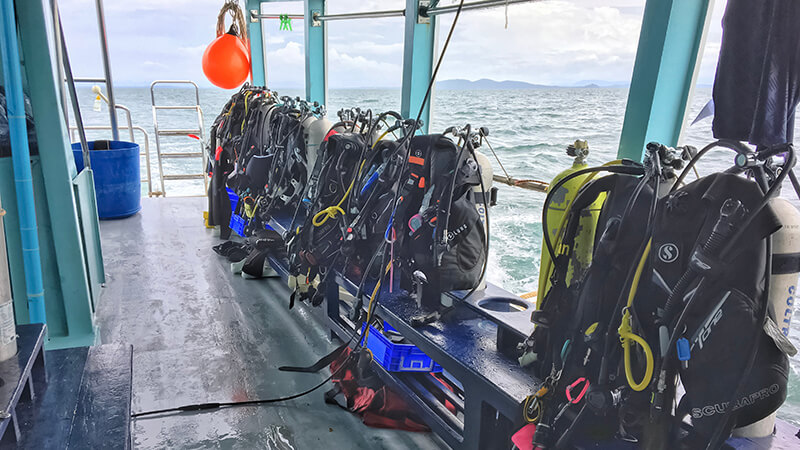
How important is a BCD for diving?
It is very important. As you have already learned by now, its main job is to help you descend and ascend, as well as stay at a certain level.
Besides, how else would you be able to savor that weightless feeling in water when you are lounging in the nirvana found between sinking and floating?
You only have to inflate the bladder when on the surface and you definitely will float. It’s an incredible experience. However, if you want to deeply sink yourself under the water, this device will take you close to the turtles and sharks.
Your scuba BCD offers exactly what it promises. With your jacket BCD scuba on, you will find that you only need to use less energy to stay underwater. You will also have better control when floating weightless under the water.
When you are an experienced diver, you want to stand inside the water, kneel or even drift effortlessly along mid-water, as you take in the scenery. A BCD allows you to do all this easily.
Your diving BCD has 3 key functions which include holding your tank, enabling you to float on water as well as creating neutral buoyancy when you are underwater.
What Are Some of The Features of a BCD?
Straps
You have to connect the tank to the Buoyancy Compensation Device with strong nylon straps as well as a backpack-style tank mount. Set the tank and the BCD at the right height, that is, the top of the tank should be even with the height of the scuba BCD.
Straddling the tank between your knees, pull the straps towards you tightly, then get the strap into the upper opening on the buckle, pull it strongly towards you so that the buckle goes flat and then close the strap. There is a Velcro section to help you do that. You will feel that the tank is tightly secured.
The BCD also has to be secured to the diver. There are Velcro straps for this purpose. Since the bladder is integrated with the BCD, it becomes easier to transfer the buoyancy to the diver once the entire BCD system is secured to the torso.
Air bladder
The BCD jacket has a bladder which takes or releases air depending on whether you want to descend or ascend, or to stay at a certain level.
Attached to the bladder and running to the scuba diving tank is a low pressure feed that injects air to the bladder. You control the air by use of an inflation valve. Sometimes, you may bring a small auxiliary air tank for the BCD alone. There is also an oral inflation valve that you may use to blow air into the bladder.
If air goes in, then it must go out sometime. Thus, your scuba diving BCD has a vent for dumping, with a controlling valve so that you do not let out air too much too fast. There are two vents, one at the waist level and another at the shoulder level. They can be used intermittently, when one is upright and when one is upside down in the water.
BCD pockets
Some BCDs may also come with a crotch strap that can secure it further to your person. Another thing that you will be happy with is the inclusion of pockets that you can use to carry small gear that you may need down there. You may even carry an extra scuba diving knife in addition to the one strapped to your leg.
D-Rings are included so that you can attach your camera for scuba diving, diving flashlight and other items that you may need for diving.
Back plate
Padded plate will also be included in the scuba BCD. Such is used for comfort only. Trim weight pockets are included for helping the diver to adjust his/her COG. Basically, what we are trying to say here is that the BCD for diving is a complete, all in one gear that will help you control your buoyancy very well.
Remember, all the features we have discussed here, including the air bladder itself are encased in a tough casing made of textile with good thread count. This is a piece of gear that is designed to last a long time if given good care. You will find all of these features pretty strong.
BCD materials
As you look for information for what is a BCD, you will see that it is made up of different materials.
A durable BCD should be made of high quality material. By material, we mean the fabric that has been used in order to construct/make the vest which attaches the dive gear to the diver.
The material used should be strong enough and should not be prone to tear and wear. There is nothing poetic about changing costly diving gear each year. The salty nature of the oceans can be quite unforgiving to lesser material.
Even the coloring of the scuba BCD is so strong such that it cannot easily fade even after exposure to the sun or in the water.
It will also be resistant to discoloration even after a diver uses it inside chlorinated waters. The Velcro straps, zippers and quick-releases as well as other parts for securing things to the BCD, and the BCD to your body enhance the effectiveness of a BCD. They too, buckles, D-rings, anchors and all are very strong.
Dump valves – These ones enhance quick purging of the air in the BCD. Good BCDs come with at least 3 dump valves, some automatic and one of them manual. They are important as they help you to dive deep in the water by releasing the air that keeps you buoyant when beginning to dive. They also help you to make controlled ascent.
All bladders are not equally created. The most popular one is the two-lined bladder. This bladder is encircled by two layers. Such a bladder offers extra safety in cases where a diver hits bumpy coral or in case the scuba BCD is penetrated by other objects.
The bladder`s volume determines the amount of lift it can offer. Note that you will need more weight for you to sink in case you are diving with a wetsuit.
How To Use Buoyancy Compensator Device
Choose a BCD depending on where you intend to utilize it the most. It should be the right fit for you and the style you settle for ideal for your diving needs.
BCDs come in different sizes and the last thing you want is an over-sized one, or a BCD that is too small for you.
When going to dive, wear your scuba BCD and you can also wear diving gloves. Confirm whether your device inflator hose matches the diving regulator set-up on the tank.
Enjoy diving and after you are done, be sure to thoroughly rinse your BCD using clean water. Leave it to dry completely in direct sunlight. Inflate it partially then store it in a dry & cool place. Your weights should be removed from the weight pockets before cleaning it.
Styles and Types of Buoyancy Compensator Devices
If you really want to enjoy scuba diving, you definitely will need Buoyancy Compensator since it will make everything easy. Diving without this device is almost impossible. It will be hard to stay neutrally afloat.
Here are the various types of Scuba Buoyancy Compensator Devices:
Vest or Jacket Style BCDs
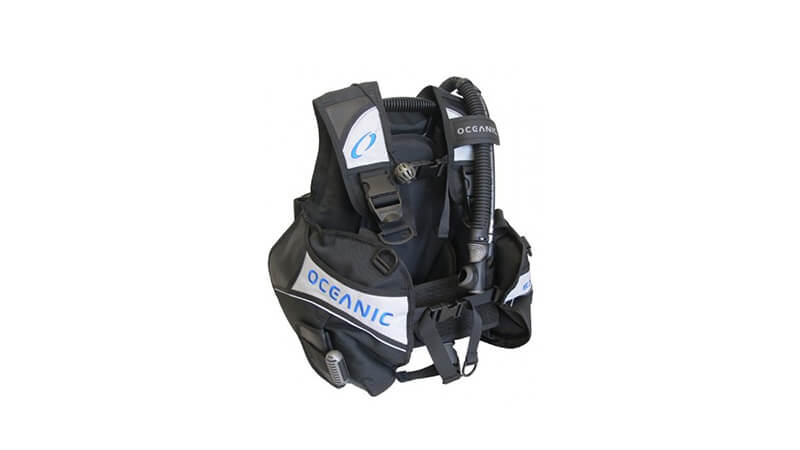
This one is the most prominent. It is best for warm water diving. New divers should get this BCD type once they receive their certification for scuba diving. Just as the name “jacket” or vest style suggests, this scuba diving style features a sleeveless jacket or even a vest.
Air bladders enfold the diver back to front. Basically, BCD’s air bladder encircles the waist and back of the diver. The biggest air bladder portion lies along the diver`s torso side as well as under their arms.
This style has good ability for stabilizing thus allowing the diver to float at the surface vertically. Most divers say that this style makes them feel comfortable. It is also easy to wear and get out of. It’s a perfect choice for your diving vacation.
Wing or Back Mounted BCD Style
This scuba BCD type has its air bladders located on the diver`s back and on both sides of the tank. This is why it is referred to as a back mounted style. This style is preferred due to the clarity of the diver`s front not to mention it allows you to move more freely than the vest style BCD. In addition, it has a great lift capacity over the vest style.
Wing style BCD
This is the best scuba BCD for technical diving where more than one tank for diving may be used. To make this effective, you will have to wear a steel or aluminum harness on your back. You can the attach the wing to this back plate so that it is located between your back and the scuba cylinder.
One of the benefits of using the wing style BCD is that you can switch to a bigger buoyancy compensator. You will just have to use the same back plate.
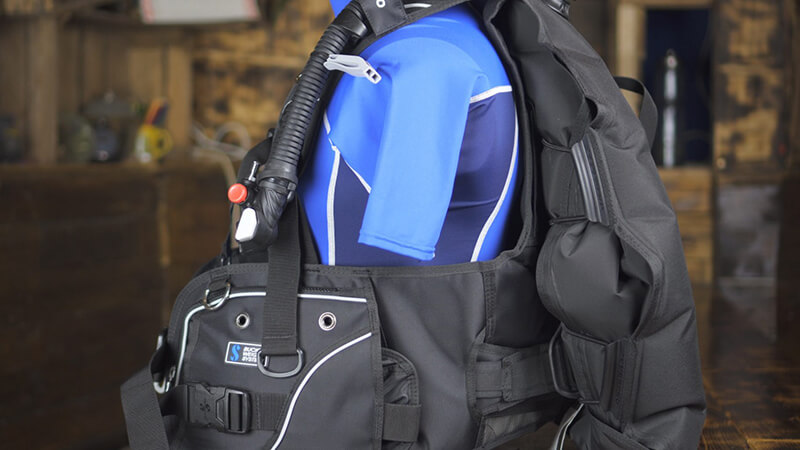
Another benefit is that with the wing located squarely on your back, you will enjoy a horizontal position in the water, once you have attained the diving depth that you want. It also has weight pockets so that you can take weights to take you as deep as you would like to dive.
Note however that you will struggle to keep a vertical position on your dive. As to the question of what is a BCD for scuba diving, you have now seen what it is all about. At first, it will be a bit hard to figure out how to fit it, but that is why we have dive buddies so that you can always check out on each other.
Conclusion
To know what is a BCD for scuba diving is not hard. There is a lot of information on the web and in other resources about this very important piece of diving gear. The most important thing is to know how to use it. With practice, you should become quite the pro. As you visit some of the best beaches in the US, carry your diving gear with you. You never know when you might feel the urge to take a dip.
